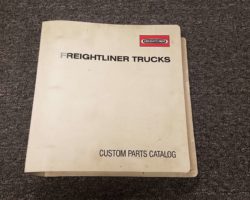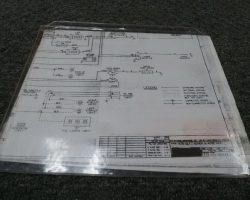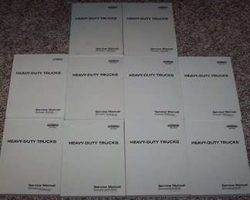1989

Factory Original FREIGHTLINER HEAVY DUTY FLA / FLB / FLD 1989 Manuals
The FREIGHTLINER HEAVY DUTY FLA / FLB / FLD 1989 has proven popular over the years. Below are the factory original FREIGHTLINER HEAVY DUTY FLA / FLB / FLD 1989 operators and service repair manuals available. In addition, this page has links to the electrical wiring and parts manuals for the FREIGHTLINER HEAVY DUTY FLA / FLB / FLD 1989. These are the exact manuals your FREIGHTLINER dealer has and are the best money can buy. If FREIGHTLINER HEAVY DUTY FLA / FLB / FLD 1989 is not what you are looking for, click on the navigation links or call our friendly staff for manuals for all trucks, engines, transmissions and equipment in the United States. Click or call now.
Click FREIGHTLINER HEAVY DUTY FLA / FLB / FLD 1989 Manuals Below
Showing all 4 resultsSorted by price: high to low
Related Questions
What type of transmission does the 1989 Freightliner Heavy Duty FLA have?
The 1989 Freightliner Heavy Duty FLA had different transmission options, including manual and automatic transmissions. Common manual transmission options for the 1989 Freightliner Heavy Duty FLA included the Eaton Fuller 9-speed and 13-speed transmissions. Automatic transmission options included the Allison HT740 and HT750.
Does the 1989 Freightliner Heavy Duty FLA have air brakes?
Yes, the 1989 Freightliner Heavy Duty FLA models were equipped with air brakes. Air brakes are commonly used in heavy-duty trucks to provide reliable and efficient braking performance. They utilize compressed air to actuate the brake system, ensuring consistent and powerful braking capabilities.
What type of cooling system does the 1989 Freightliner Heavy Duty FLD have?
The 1989 Freightliner Heavy Duty FLD utilizes a liquid cooling system. Coolant, a mixture of water and antifreeze, circulates through the engine block, radiator, and other components to absorb and dissipate engine heat. The radiator cools the coolant with airflow, naturally or with a fan before it recirculates through the engine. This process maintains optimal temperatures, preventing engine overheating.




